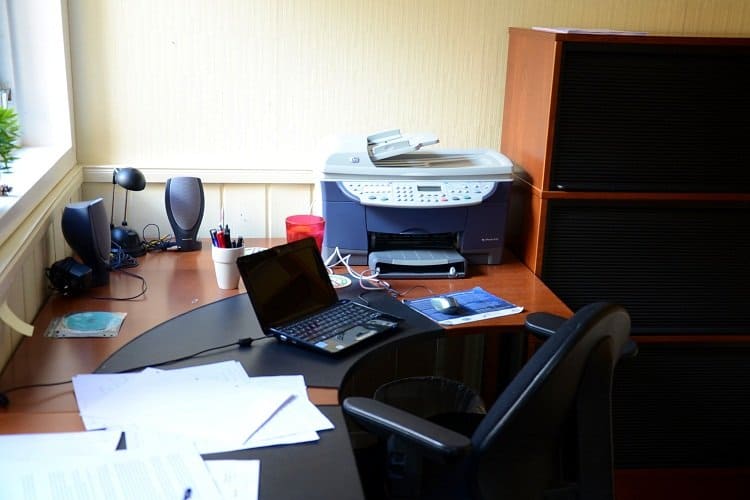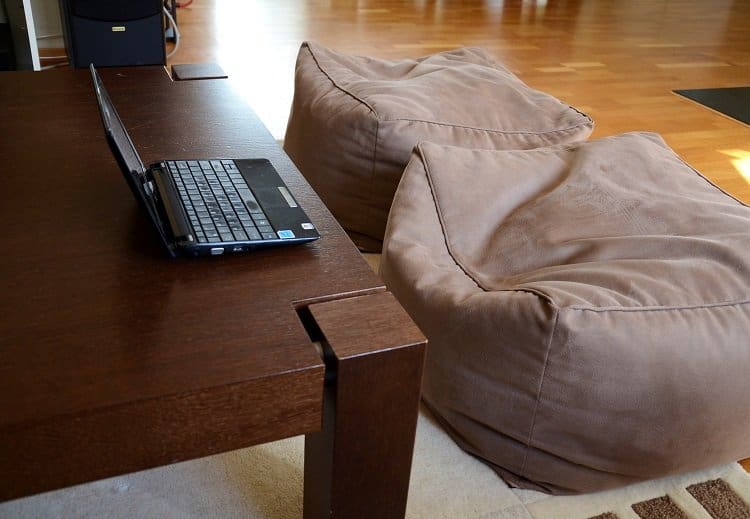When preparing to head off travelling, plenty of people worry over which laptop and equipment they should buy to make that switch to working wanderer. But what too few of us remember to do is think about how becoming a full-time laptop user is going to impact our health. You may not be guilty of this and if so I congratulate you. Keep doing what you’re doing. This post is for those who haven’t thought much about posture while travelling and working full-time.
I got a scary wake-up call a couple of weeks ago. I’m not travelling at the moment but for about fifteen months I was using only makeshift workstations while we were on our around the world trip. I’ve never had any back problems until now and I’m still reasonably young (early thirties), so I really didn’t think about the impact my computer use and crappy posture were having on my back. I’d work in bed with the laptop, sitting on airport benches or in front of plane or train tray tables. Desks and chairs were rarely ever in the proper alignment while I was using them to work on the computer. This is difficult to avoid when travelling. I’ve found that even luxury hotel room desks and chairs are not always designed for ideal posture, never mind what you’ll find in a mid-range or budget offering.
One Friday night after a full day sitting in front of the computer I began to have really powerful muscle spasms in my lower back. I could barely walk and when they hit me the pain was like nothing I’d ever experienced before. Over the next couple of days the spasms eased off but my body had become contracted on my right side (I’m right- handed) so that one leg felt shorter than the other and my back was curved to one side. I looked as if I had scoliosis and I was completely locked up and could not stretch out my right side. Any attempts to straighten myself out were met with stiff resistance and sometimes a confronting spasm – my body’s way of telling me, “Uh, uh. Not happening. This is your punishment.”

This may look at bit better but those trendy dining chairs are not intended for hours of seated computer use.
Things eventually became so bad that I could not lay down in bed. I had (and still have) two large knots in my lower back and laying on them had become intolerable. When I had to spend the night stretched across two bean bag chairs in the living room because it was impossible to find a non-excruciating position in bed, I consulted a naprapat recommended by a friend of mine. I’ve been trying to find a website in English that describes this practice but, having never heard of it until now, am assuming it’s a Scandinavian thing. If you have a translator on your browser and are interested you can read more in the Wikipedia article. After one session I was remarkably better and am continuing the therapy once a week. I’ve also improved my posture, which is easier because I am at home and have a proper desk setup.
Because I did not have a specific instance of injury, I’m pretty sure my problems were caused by my total disrespect for my body over the last year and a half when using the computer. If you’re about to quit your job and head off on a long adventure with your computer in tow you may find you’ve taken for granted that nice ergonomic workstation at your office. Human beings were not designed to sit upright for hours at a time and work at a computer as it is; they were especially not intended to use a laptop.

As soon as I buy a new desktop computer, this setup will be perfect. I have a proper desk chair and everything is adjusted to the correct height. This is not a luxury afforded to travellers unfortunately.
Laptops cause special kinds of problems. Your head is bent over awkwardly and your hands are in a terrible position over those small keyboards. Even now as I type this I’m waiting anxiously for the day when I buy a desktop computer. I’m in a perfect ergonomic position otherwise but it’s impossible to get completely comfortable.
You cannot have perfect posture when using a laptop but I wrote this post to remind everyone to take care of your body when you’re working on the road and do your best to practice good posture. I’m not an expert in this area so I’ve pulled together a few articles and videos that will help you with this:
Good Posture to Maintain While Using Laptop at Home, Office and while Traveling :: Technified
5 Solutions to Create Good Ergonomics for the Nu Nomad Office :: NuNomad
Tips for proper Laptop-Ergonomics :: Physical Therapy Coach
What are your good posture tips for working from the road?

